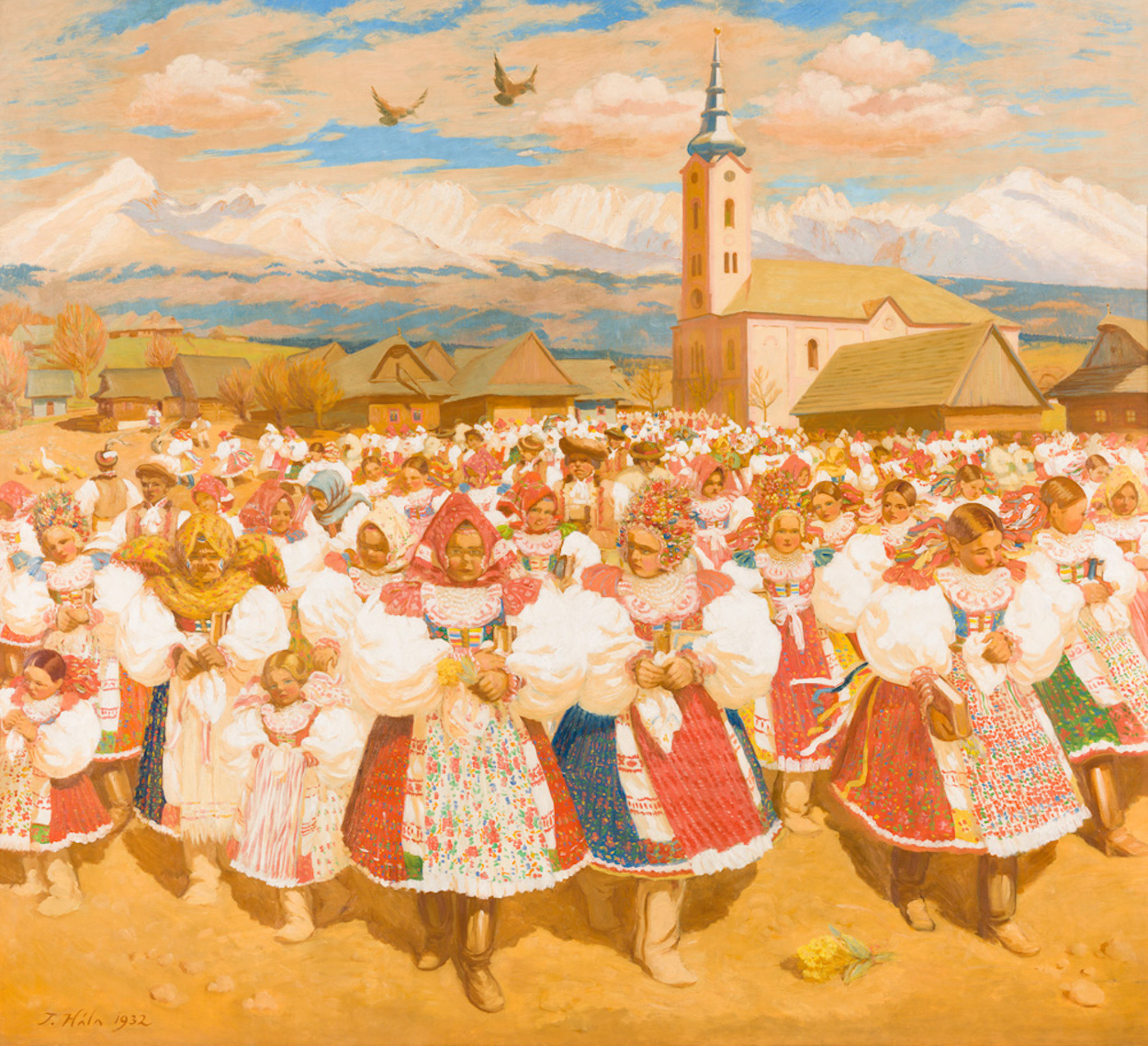We present today's painting thanks to the Slovak National Museum - Museum of History. The piece can be seen in The Czech-Slovak / Slovak-Czech Exhibition which presents a joint project of the Slovak National Museum in Bratislava and the National Museum in Prague, produced on the occasion of the 100th anniversary of the foundation of Czechoslovakia (1918-1992) in Central Europe.
This impressive, large-size painting was made by Jan Hála—a native Czech who spent most of his life in Slovakia. In 1923, Hála settled in a Slovak village of Važec under the High Tatra Mountains. His particular artistic focus involved documenting this distinctive country and Slovak folklore, which he recorded by traditional means of fine arts. He also devoted his time to illustrations and became one of the founders of modern Slovak illustrations for children and youth. Hála was also active in ethnography and documentary production; he was also a contributor of essays to the Czech newspaper, Lidové noviny.
The theme of this genre composition involves a group of women coming out of a village church with the mountainous Tatras’ countryside forming the background. The women are dressed in folk costumes originating from the village of Važec located in a Slovak region of Liptov and featuring rich and colorful decoration. In Hála’s use of a variety of colors we find elements of stylized Art Nouveau decoration , something that was a characteristic of the artist’s production of the early 1930s. Hála was enchanted by the Važec region and countryside. His work particularly reflects the attraction by the local folklore (customs, clothing, folk stories, and songs). Važec inspired even more Slovak and Czech personalities active in culture, such as Ján Kollár, Ondrej Halaša, Karel Plicka, and Pavol Socháň. In addition to Hála, artists Jaroslav Augusta and František Havránek stayed in Važec.
– Martina Vyskupová –


 Jan Hála
Jan Hála